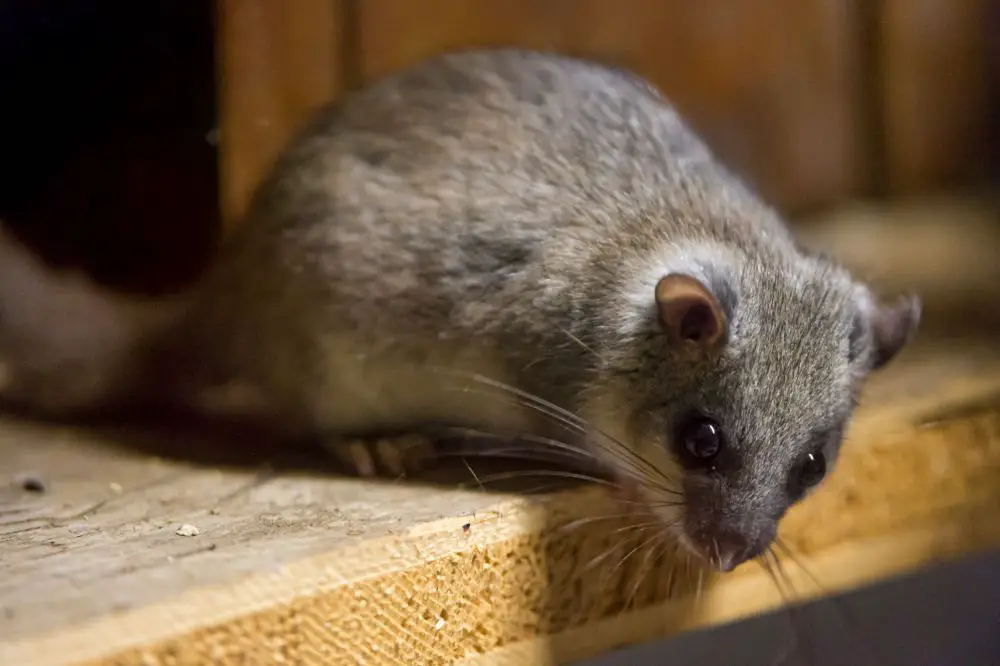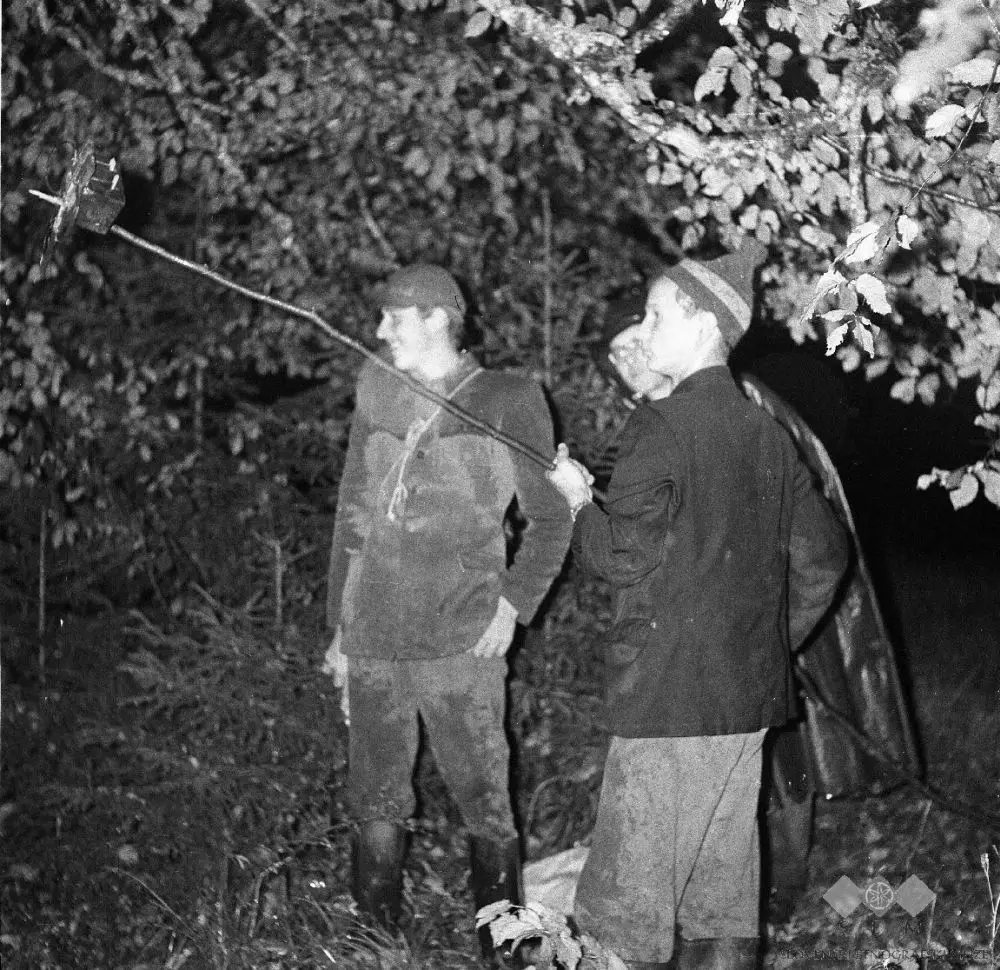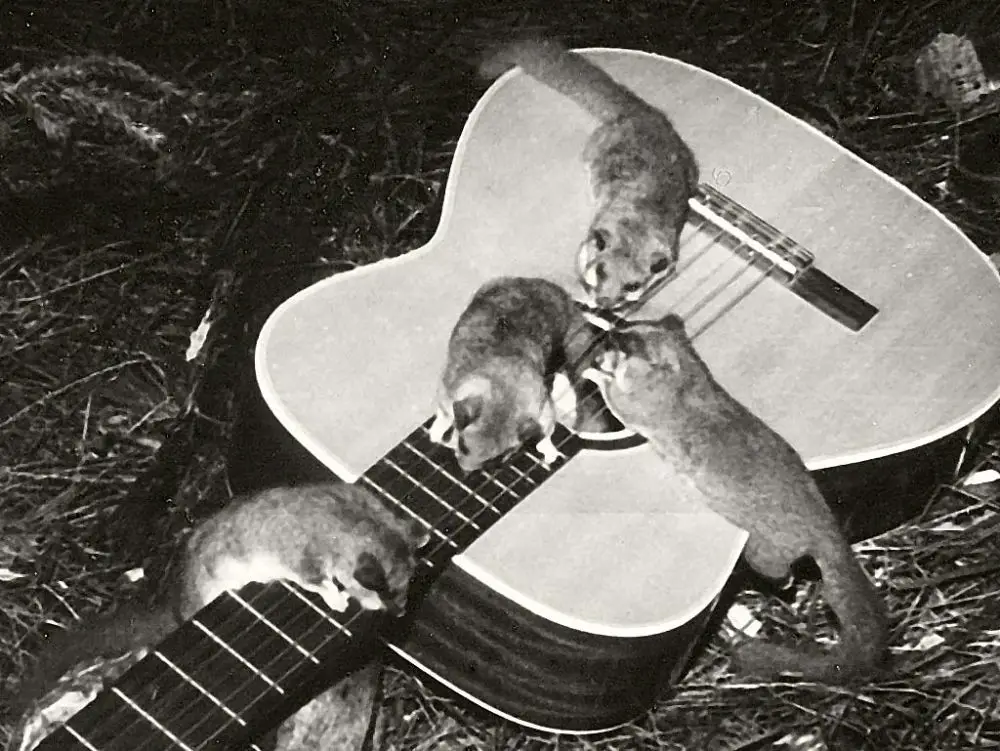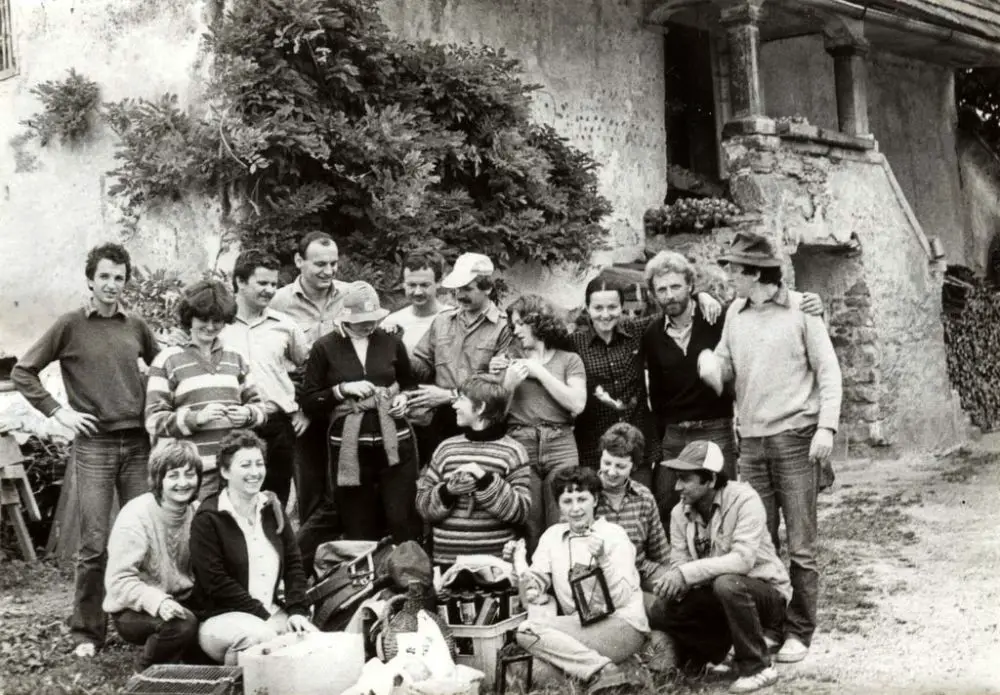Ljubljana related
STA, 29 May 2019 - Several local civil initiatives demand legislative changes and an immediate cull of bears and wolves in areas where livestock is being attacked, in what is an escalation of long-simmering tensions over how to deal with Slovenia's growing population of large carnivores.
In a letter addressed to Prime Minister Marjan Šarec earlier this week, three civil initiatives demand that hunters immediately shoot the number of bears and wolves designate for culling by the Forest Service.
They also want jackal, whose numbers have been growing rapidly in recent years, to be designated as game animal.
Related: Hunting an Ageing Pursuit in Slovenia, and Killing a Bear Costs Between €600 and 6,500 (Feature)
The appeal is the latest instalment of a long dispute that has pitted environmentalists against farmers, scientists and hunters in a fight over what to do with large game in Slovenia.
The bear and wolf population is kept in check with an annual cull and this year the Forest Service proposed that 200 bears be shot, a decision based on scientific estimates of the bear population. Wolves are not slated for culling this year.
But environmentalists challenged the subsequent government decree at the Administrative Court, which refrained from deciding on the cull as such but ordered the government to adopt a new decree setting the number of animals slated for culling.
In the meantime, farmers are reporting increasing damage by bears and wolves and have recently staged a protest in Ljubljana bringing cadavers of animals killed by bears.
The civil initiatives from Kočevje, Notranjska and Primorska, areas in western Slovenia that are home to Slovenia's bear population, now demand that the government also change the law to give expert institutions including the Forest Service, Hunting Association and Chamber of Agriculture and Forestry exclusive say over culling.
Related: In Search of Brown Bears in Slovenia
"The decision-making procedure must be exempt from the legal frameworks of the administrative procedure law and preclude the option of appeal from anyone," the associations said.
Locals would have majority say in any culling decisions and no projects involving large carnivores or other game would be possible without local approval.
Another major demand is to bring the population levels of large carnivores, deer and wild boar to 1990 levels to reduce damage to forests and farmland.
Slovenia is considered by many as a role model for management of large carnivores, but its linchpin has been the regular culling of a very healthy and growing population.
From near extinction in the early 20th century, the population rose to an estimated 700 animals by 2015, according to data by the Biotechnical Faculty.
Scientists have warned that acceptance by locals is key to management as well, with Klemen Jerina, one of the most prominent bear researchers in Slovenia, recently saying that they support the cull of 200 animals.
"But we've come to a point where we believe there are enough bears. If the number continues to grow, the number of conflicts will increase as well," he said in February.
Environmentalists, on the other hand, base their opposition to the cull on the animals' inherent right to live.
STA, 26 April 2019 - The Farmers' Trade Union staged a protest on Friday, demanding that the government take immediate action, as a growing bear population is causing considerable damage to herds. Agriculture Ministry State Secretary Marko Maver promised farmers that an extraordinary kill measure would be ordered to mitigate the situation.
The protest was staged ten days after the Administrative Court sided with an environmental NGO that challenged the ministry's order to kill 200 bears this year.
The bear population is estimated at 750 in Slovenia, while in the early 1990s it was at 350. Currently, the population expands by 200 bears a year and could reach nearly 1,000 by the end of the year unless 200 are killed or relocated.
Unionist Roman Žveglič said that the ministry staff had listened carefully and promised to launch the measure of extraordinary killing in places where bears were causing the most damage.
Maver told the press that the ministry understood the distress of farmers. "We are all aware of the importance of sustainable management of bear population."
The ministry will moreover appeal the Administrative Court's decision and is drafting "additional documents on why the proposed number is justified," said Maver.
Žveglič said that in case the ministry failed to provide assistance, farmers would stage civil disobedience. "This means that we will start hunting wild animals ourselves, poisoning and shooting them."
At the rally, staged in front of the ministry, Florjan Peternel, a farmer from Ilirska Bistrica (SW), brought with him the remains of calves attacked by bears.
Until recently, his herd had no calves due to bear attacks in 2017 and 2018. "A fortnight ago, calvings started and 15 cows had calves. But yesterday, disaster struck. None survived."
All our stories about bears in Slovenia can be found here
January 16, 2019
Dormice have been hunted for centuries in Slovenia. Nevertheless, unlike many other wild and edible species their numbers continue to persist, which is why polhanje, as the activity is called in Slovenian, managed to continue into the present. The hunting season officially begins every first of October, and different to the majority of such seasons is open to the broader public, anyone who has applied for a special dormouse hunting permit which is relatively easy to get.
Hunting for dormice has changed significantly over the years, as it has gradually moved from an economic necessity towards the preservation of a tradition of socializing at night in the forests, an event of drinking and hanging out that can often conclude without a single mouse being caught.
Dormice were a delicacy in Roman times, and hence the species’ alternative name, edible dormouse, although the habit of eating them only seems to have persisted in Slovenia and Croatia. Let’s take a deeper look into the folklore that helps to put these adorable creatures on a plate, and how it has changed over the centuries.
Habitat and habits of a Slovenian dormouse
In Slovenia, the dormouse, although found almost everywhere, is most common in Inner and Lower Carniola, that is notranjska and dolenjska. In terms of altitude, its habitat is limited by the beech forest, given that beechnuts are an important part of the diet of these animals. The dormouse is an omnivorous creature who likes to eat everything from insects, even tiny birds, to soft fruits, leaves and seeds. Nevertheless, its successful hibernation mostly depends on what it can eat from beech, oak and hornbeam trees.

Dormice spend most of the day in holes in the ground or tree trunks, or in between roots, in birdnests, under the roof tops or other shelters. At night they move along the tree branches and are quite good at jumping, said to be even better than squirrels.
Hunting technique
All of this is a very important information when it comes to hunting, as what hunter has to offer in his self-triggering trap must really be very delicious if a fat, autumn dormouse is going to crawl inside and take the bait. Such an animal isn’t going to get caught for a snack it can easily find in the forest.
Typically, bait would be placed into a wooden self-triggering trap, which was put on a long hazel stick and hanged on a tree.


Although the recipe for dormouse bait is every hunter’s cherished secret, the word is out there that it should include a drop of fine pear brandy with a pinch of cinnamon. That is, of course, if you really want to catch, kill, skin, de-gut, cook and eat a dormouse. Most of the people who go on a polhanje today are not that much into hunting, and often spend the night without making a single catch, not caring as long as the company is good, other, less formerly cute foods are available, and the drinks are abundant.
Tradition
The first record of dormice hunt and eating in Slovenia dates back to the 13th century, and was later described in detail by the Slovenian historian Janez Vajkard Valvasor. Dormice used to present an important source of protein for Slovenian peasants, while their fat was also used for healing wounds. Dormice kučma-like hats (polhovka) have since the Birth of Nation (in the middle of the 19th century) been a symbol of Slovenia, and were even banned by the Nazis during WWII. After the war, this hat was placed on the head of the New Year figure Dedek mraz, to make him more Slovenian, not Russian, after the Soviet-Yugoslav split in 1948.
The main goal of polhanje is not to catch a few dozen small animals for a memorable feast, but rather in preserving the tradition of life in nature, and above all such meetings are fun social events that takes place after dark in the forest.


January 7, 2019
The administrative court suspended the implementation of the decree on the removal of brown bears from nature, which the government endorsed at the end of last November. According to the decree, 200 bears were planned to be taken out of Slovenian forests. Among these, 175 were supposed to be shot, while the remaining 25 were expected to die due to accidents or other causes.
Related: Brown bear photography in Slovenia
In December, the environmental protection organisation Alpe Adria Green (AAG) brought an action against the decree and a request for an interim injunction. The group is convinced that the decree violates the Nature Conservation Act, the Habitats Directive and the Constitution. The AAG noted that the government endorsed the decree despite numerous complaints on its drafting, and that the Ministry of Environment and Spatial Planning did not answer the requests for an explanation as to why such a number of bears had to be removed from nature. At the same time, the AAG expressed its expectation that the decree will also be annulled.
This is not the first time that the court has intervened in the destiny of large wildlife in Slovenia. The same decree that involves bears previously included eleven wolves to be taken out of nature, but after a public hearing the wolves were removed from the proposed cull. The Environmental Ministry took this decision after two judgments of the administrative court, which ruled that the reason for shooting the wolves, which was given as preventing the animals from killing livestock, and thus maintaining public acceptance of wolves, was not sufficiently substantiated.
All out stories about bears in Slovenia are here.
December 10, 2018
It has been reported last week that a Slovenian hunter killed a bear called Elisio, a collar-wearing subject of research at the University of Udine, Italy. The animal was shot in the area of Senožeče, Slovenia, and has in the past five years, while wearing the tracking collar, survived a collision with a train, completed several ascents over 2100 metres, swam across Cavazzo lake several times, and figured out how to safely cross a Slovenian highway.
The event stirred a lot of outrage on the Italian side of Elisio’s territory, while it continues to remain a minor story in Slovenia. One of the reasons might be in a conservation status of the Italian subspecies of the brown bear, that is the Apennine Brown Bear, which is marked at “critically endangered”. In contrast, the Slovenian government struggles to keep the number of ordinary European brown bears in check, with the conservation status marked as “least concern”, and bear salami being an ordinary offer at the Christmas stalls found in the central marketplace of Ljubljana. The important point here is that Elisio was an ordinary brown bear, not an endangered Apennine subspecies.
There are currently about 1,000 bears in Slovenia, and the Slovenian Ministry of Environment and Spatial Planning ordered this number to be reduced by 200, 175 of which will be taken out by hunters before April 30, 2019 (Delo). This is also the reason why Italian researchers reported weekly on Elisio's whereabouts, hoping this would prevent him from getting shot. It did not.
Andrej Sila, from Sežana branch of the Slovenia Forest Service, expressed regret at the incident: “We are all very sorry that the hunter shot Elisio. We have permission to shoot five bears in our area due to population control. It happened as a consequence of a series of unfortunate events. The hunter shot the bear in the evening, when his collar wasn't visible.”. He also explained that weekly reports on the whereabouts of the bear cannot prevent these types of accidents, since bears tend to travel tens of kilometres a day.
This is not the first time Slovenian hunters killed a bear with an Italian research collar. In 2011 a Slovenian hunter shot a bear near Vrhnika, who then turned out to be an Italian media sensation called Dino. In the preceding year Dino managed to kill 14 donkeys in Northern Italy before the Slovenian hunter did not see his collar and shot him in a forest (source). Dino’s survival prospects, however, were dim even without the shooting, as his collar had grown deep into his flesh, causing an infection and starting to slowly suffocate the animal. When the hunter first saw him, Dino was hitting his head against a tree, presumably due to the pain. The collar, unlike the ones in use today, was not equipped with a “drop-off” system, which activates when the collar becomes too small and begins making it difficult for the animal to breath.
STA, 8 December 2018 - As 45 years pass this year since the lynx was reintroduced to Slovenia, preparations are under way for the first new animal to be brought to Slovenia early next year as part of the Life Lynx international project.
The wildcat will come to Slovenia from Romania or Slovakia, depending on which country manages to catch it first, the Life Lynx project group has told the STA.
The Eurasian lynx was reintroduced to Slovenia in 1973 upon the Slovenian hunters' initiative.
There are perhaps between 15 and 20 lynx in Slovenia
The current population, estimated at 15 to 20 animals, are descendants of six animals brought to Slovenia then from Slovakia.
The Life Lynx project group also launched this year a systematic monitoring of lynxes with automatic cameras, but results have not yet been fully analysed.
The largest wildcat in Europe is at the verge of extinction; it is believed that it could die out in a few years' time unless action is taken.
The Life Lynx project aims to save the lynx population in the Dinaric Alps and in south-eastern Alps.
It brings together eleven organisations from five countries, with Slovenia's partner being the national Forestry Service.
The first lynx will be released in the area of Loški Potok in the region of Kočevska in the south on the border with Croatia.
Before it is released, it will spend some time in a quarantine in the area, also to get used to the new environment.
"We expect an animal to spend some three weeks in quarantine," the group said.
Ten more animals due to arrive in the country
As part of the project, ten animals are expected to be brought to Slovenia, five to the regions of Kočevska and Notranjska and five to Gorenjska, north-west.
"The lynx released in Gorenjska will help connect Dinaric lynx populations with those in the Alps, which is vital for their long-term existence in Slovenia and in the Alps."
As part of the reintroduction, the Slovenian Hunters' Association will help train some 20 police officers who will investigate illegal lynx hunting, in what the project group said was unique in Europe.
You can learn more about the Life Lynx project in Slovenia here
STA, 30 November 2018 - Slovenian hunters are getting older and their organisation is struggling with declining membership, which is just one of the challenges. They also oppose culling plans that they have no say in.
The Hunters' Association (Lovske zveze Slovenije) argues that the deer culling plan imposed by the Agriculture Ministry is excessive considering the size of the deer population.
The association has told the STA their members are not in a position to realise the planned culling, but that they face high fines, from EUR 4,100 up per a hunting club, if they do not.
Hunters took 8,229 red deer and 41,869 roe deer from nature last year, which includes large numbers that perished due to extremely low winter temperatures.
Under the plan, hunters should have killed almost 5,000 red deer and 39,986 roe deer.
Despite the large numbers of deer and wild boars lost in last year's winter kill, the Hunters' Association says they have been instructed to implement the culling plan for this year in full.
"We cannot agree with a plan that doesn't take into account the projected deer population trends, but only by the damage done to trees by game."
Average age of hunters is now over 56
The Hunters' Association, counting 22,000 members, is worried about dwindling membership numbers. They have also had to withdraw more than 200 hunting licences for various reasons this year.
The average age of hunters is quite high, standing at over 56 at the end of 2017.
Membership is a key source of income for hunting clubs but an important source of income is hunting tourism although the clubs managing hunting grounds pay a concession fee to the state.
Foreign game hunters coming to Slovenia are interested mainly in chamois and bear, but they also hunt other large game.
Related: Slovenia's Ministry of Environment Wants Hunters to Kill 200 Bears and 11 Wolves
Hunting tourism is the principal activity of special-purpose hunting reserves. Out of 408 hunting reserves in the country, 12 are special purpose.
Ten of these are managed by the Slovenia Forest Service (SFS) and one by the Triglav National Park, while hunting clubs are responsible for sustainable game management.
Hunting tourism is available to guests from Slovenia and abroad. The guests who are not hunters need to be accompanied by a hunter with a valid hunter's licence.
It costs between €600 and 6,500 to kill a bear in Slovenia
Apart from domestic guests, it is Austrians, Germans and Italians who come to hunt in Slovenia most often.
Ljubljanski Vrh, one of the ten reserves managed by the SFS, hosted 1,900 guest hunters last year, some of them several times.
The Forest Service made over EUR 1m from hunting tourism last year.
The guest hunter will pay between 600 and 6,500 euro for killing a bear plus a daily hunting fee. A red deer trophy comes at between 215 and 5,500 euro and a roe deer trophy between 50 and 400 euro.
STA, 19 July 2018 - The Slovenian Ministry of the Environment and Spatial Planning has proposed culling 200 bears and 11 wolves to cope with increasing populations, inviting ire from activists.
STA, 17 May 2018 - Several organisations representing farmers and forest owners have launched a petition urging the authorities to reduce the populations of deer and large carnivores. The petition has been signed by 51 organisations and will be sent to the government, parliament, European Commission and European Parliament.




